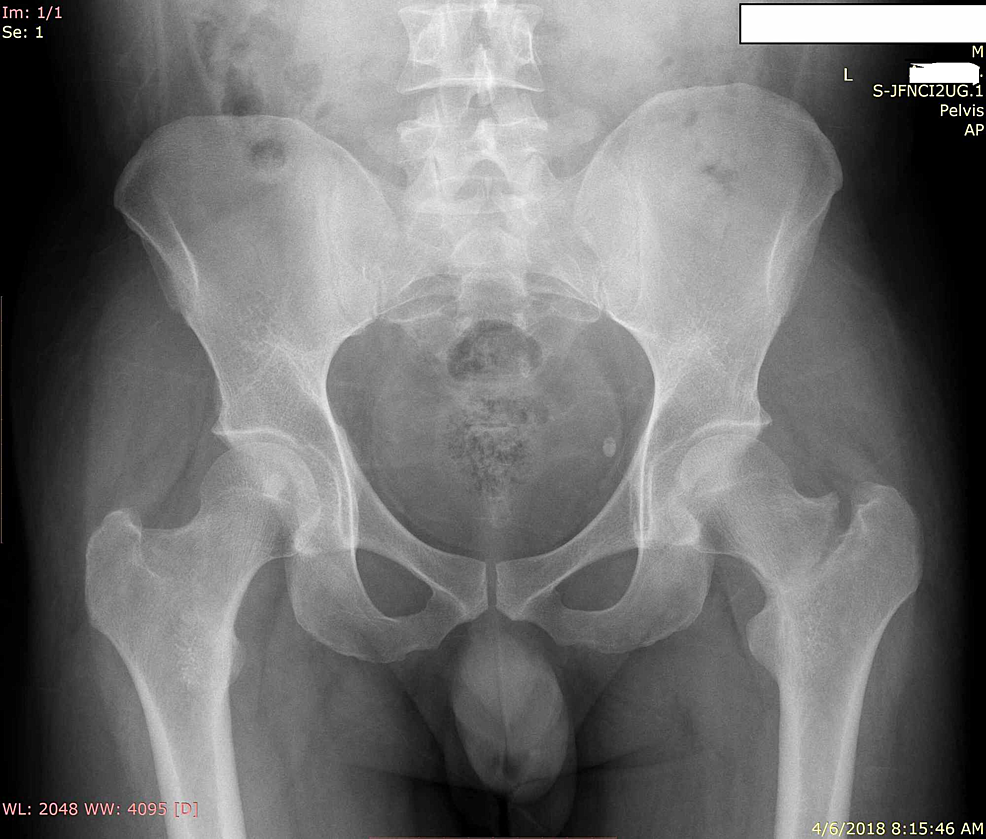

Heterogeneity of hip fracture: age, race, sex, and geographic patterns of femoral neck and trochanteric fractures among the US elderly. Karagas MR, Lu-Yao GL, Barrett JA, Beach ML, Baron, JA.Shenton’s line, hip fracture, transcervical fracture, subcapital fracture, pelvis CT, hip x-ray, trauma, comminuted fracture, impacted fracture, femoral neck fracture, orthopedics. Plain film radiographs have been found to be at least 90% sensitive for hip fractures CT’s have been found to be 87%-100% sensitive and 100% specific for occult hip fractures in which plain radiographs were read as negative, but the patient still complained of hip pain Although MRI is currently the gold standard for detecting occult hip fractures (sensitivity and specificity = 100%), given MRI’s limited accessibility in the ED as well as the high sensitivity and specificity of CT scans for occult hip fractures, it is generally recommended to obtain CT scans for patients with suspected occult hip fractures as a first-line investigation Topics: 1 Diagnosing a femoral neck fracture can be made with plain x-ray, CT, or MRI. Discussion:įemoral neck fractures are one of the most common types of hip fractures, accounting for 49.4% of all hip fractures. The neck of the femur is displaced superiorly relative to the head of the femur while the head of the femur remains in its anatomical position within the acetabulum.

This correlates with findings seen on pelvic CT, which reveals both a subcapital fracture (blue arrow) and transcervical fracture (yellow arrow). In the anteroposterior view bilateral hip x-ray, there is an evident loss of Shenton’s line on the left (red line) when compared to the normal right (white line), indicative of a fracture in the left femoral neck. Left hip X-ray and pelvic CT revealed comminuted, impacted transcervical and subcapital fracture of the left femoral neck. Sensation and pulses were intact in bilateral lower extremities. Exam showed left hip tenderness, 3/5 left lower extremity strength secondary to pain, and 5/5 right lower extremity strength. Pain is 3/10 in severity and exacerbated by movement. The right hand image was performed later the same day, and shows that the patient has had a hemiarthroplasty.A 74-year-old male presented to the emergency department with left hip pain after falling off his bicycle. In a small proportion of cases, fractures that are occult on radiographs will also be occult on CT (especially in osteoporotic patients) – in this situation, we can either perform an MRI (which will show marrow oedema at the site of the fracture), or a bone scan. This will often demonstrate a femoral neck fracture, or an alternative fracture in the pubic rami or sacral ala (these can be very difficult to spot on plain films). A significant percentage of hip fractures are radiographically-occult, however, therefore we have low threshold for performing a pelvic CT when there is clinical suspicion of a fracture but radiographs are normal. The fracture line is better demonstrated on the lateral view (middle image, arrows). These can be difficult to identify, however if you remember to check the integrity of Shenton’s line (illustrated on the right hip) it will help you to pick them up. The AP pelvic radiograph shows a mildly displaced fracture through the base of the left femoral neck.


 0 kommentar(er)
0 kommentar(er)
